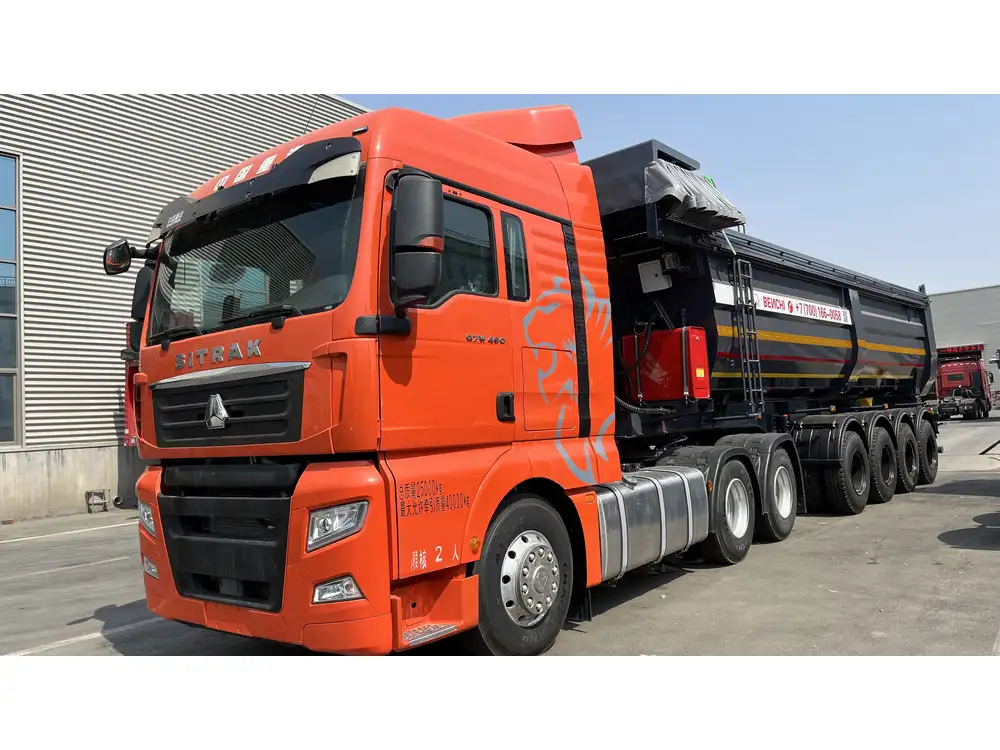In the world of trucking, understanding the dimensions of semi-trucks and the trailers they haul is crucial for logistics companies, truck drivers, and fleet managers alike. One of the most commonly asked questions revolves around the length of a semi-truck with a trailer. This article aims to dissect this query thoroughly, providing insights and practical information surrounding the lengths of these vehicles, and the implications for transportation.
The Basics: What Is a Semi-Truck?
A semi-truck, often referred to as a tractor or an articulated lorry, is a powerful vehicle designed primarily for hauling goods over long distances. The semi-truck comprises two main parts: the tractor, which is the front section that contains the engine and the driver’s compartment; and the trailer, which is the rear section that carries the cargo.
Key Components of Semi-Trucks
| Component | Description |
|---|---|
| Tractor | The front part housing the engine, transmission, and driver’s seat. |
| Trailer | The back part designed to transport goods. |
| Coupling | The mechanism that connects the trailer to the tractor. |

Typical Lengths of Semi-Trucks with Trailers
The total length of a semi-truck with a trailer can vary significantly based on several factors, including the type of trailer, load capacity, and regulations in respective regions. On average, here’s a breakdown of standard lengths:
- Standard Semi-Truck Length: The tractor itself usually measures between 20 to 25 feet.
- Typical Trailer Length: The most common type of trailer, the 53-foot trailer, can reach up to 53 feet in length.
Total Length Calculation
To give a clearer understanding, let’s look at the total length calculation:
- Average Semi-Truck (20 feet) + Average Trailer (53 feet) = Total Length of 73 feet.
In some cases, combinations using specialized trailers or additional axles can lead to:
- Total Lengths of Up to 80 feet or More in certain jurisdictions.
Variations Among Different Types of Trailers
The type of trailer significantly influences the overall length. Below are common trailer types and their typical lengths:
| Trailer Type | Average Length | Notes |
|---|---|---|
| Flatbed Trailer | 48 to 53 feet | Versatile for various cargo. |
| Dry Van Trailer | 53 feet | Common for general freight. |
| Refrigerated Trailer | 48 to 53 feet | Used for temperature-sensitive goods. |
| Tanker Trailer | 40 to 50 feet | Designed for liquid transport. |
| Lowboy Trailer | 40 to 70 feet | Often used for heavy equipment. |

Legal and Regulatory Considerations
Federal and State Regulations
In the United States, the Federal Motor Carrier Safety Administration (FMCSA) stipulates guidelines regarding the maximum lengths of truck and trailer combinations. Most commonly, the maximum allowable length for highway use is 65 to 75 feet, although there are exceptions based on state laws. For instance:
- California allows combinations up to 75 feet.
- Texas can accommodate lengths exceeding 80 feet.
These variations necessitate that truck operators familiarize themselves with regional regulations to ensure compliance and safety.
Practical Implications for Trucking Companies
Understanding these regulations is vital for trucking companies. Overly lengthy combinations can result in hefty fines and logistical challenges. Here are several considerations:
- Route Planning: Certain routes may not accommodate oversized vehicles, affecting delivery times.
- Disposal of Loads: Different lengths may affect load distribution and stability, impacting performance and safety.

The Importance of Knowing Semi-Truck Length
For truck drivers and fleet managers, knowing the actual length of their semi-truck and trailer is vital for several reasons:
1. Parking and Maneuvering
Longer combinations require more space for parking, turning, and general maneuvering. Drivers need to be adept at judging spaces accurately to prevent accidents and ensure the safety of other vehicles on the road.
2. Complying with Weight Limits
Understanding the length allows for better weight distribution across axles, abiding by weight limits set forth by federal and state regulations. This ensures optimized performance while preventing violations that can result in fines or vehicle damages.

3. Economic Considerations
Longer trailers can often transport more goods, improving the efficiency of freight operations. However, they may also incur higher operational costs. Thus, knowing the lengths helps fleet managers decide the most cost-efficient combination for their logistics needs.
Specialized Long Trucks and Their Lengths
As the trucking industry has evolved, so too have the configurations of semi-trucks and their trailers. Certain specialized vehicles are designed to cater to unique hauling needs, and these can deviate significantly from standard lengths.
Examples of Specialized Trailers
| Vehicle Type | Typical Length | Purpose |
|---|---|---|
| Double Trailers | 90 feet combined | Commonly used for longer hauls. |
| Extendable Flatbeds | Up to 90 feet | For oversized loads requiring flexibility. |
| Chip Vans | 53 to 60 feet | Used for transporting timber products. |
Understanding these specialized options enables trucking companies to adapt to their operational demands effectively.

Frequently Asked Questions (FAQs)
How Can I Measure the Length of My Semi-Truck?
To measure the length of your semi-truck, use a measuring tape to determine the distance from the front of the tractor to the rear of the trailer, ensuring you measure accurately in a straight line.
What Safety Considerations Come with Longer Trucks?
Longer trucks may require additional awareness when driving, including maintaining appropriate following distances and adapting to turn radii, which can be considerably larger compared to standard-length vehicles.

Are There Weight Limit Regulations Tied to Length?
Yes, many states impose weight limits tied to the length of the vehicle, often calculated in relation to ‘axle spacing’ which refers to the distance between axles on the trailer.
Conclusion
Understanding the dimensions of semi-trucks and their trailers is crucial for anyone involved in the logistics and transportation sectors. From optimizing operations and ensuring compliance with regulations to enhancing safety on the roads, the implications of know-how regarding truck lengths are profound. Knowing that a typical semi-truck with a trailer is around 73 feet long while recognizing the variances and regulations that apply can make all the difference in efficient and compliant freight transportation.
By addressing the intricacies of semi-truck lengths, this content empowers users, enabling informed decisions that directly impact operational effectiveness and adherence to regulations. Following these guidelines and insights can significantly elevate the standard of trucking practices, enhancing both safety and efficiency in an industry that demands precision and reliability.



